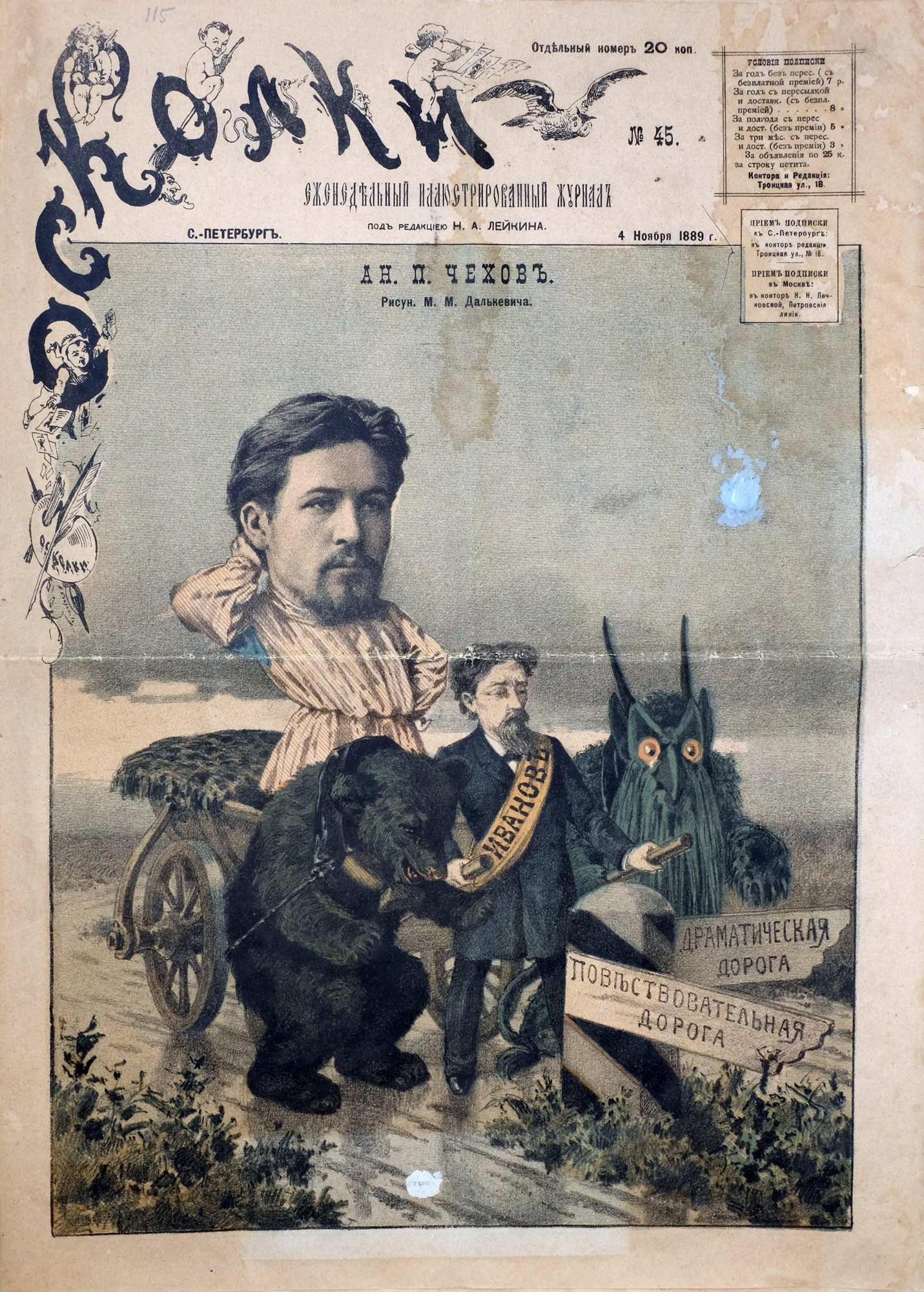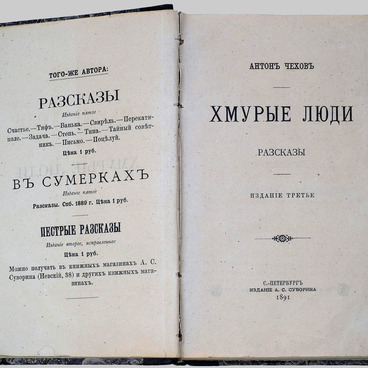45th issue of the weekly magazine ‘Fragments’ (‘Oskolki’) with illustrations on 2 sheets of November 4, 1889. Editor Leikin Nikolai Alexandrovich (1841-1906).
The cartoon, placed on the title page, depicts Chekhov in a carriage drawn by a symbolic troika from ‘The Bear’, ‘Ivanov’ and ‘The Wood Demon’. The writer is thinking about where to go next: to the left, along the ‘dramatic’ road, or straight ahead, along the ‘narrative’ one. The directions are determined by the corresponding signposts. The cartoon’s author is the artist Mechislav Mikhailovich Dalkevich (1861-1941).
Anton Pavlovich has been published in many outlets. Among them were humorous magazines “Dragonfly”, “Alarm clock”, “Fragments”, “Spectator”. From time to time his notes were placed on its pages by the “Petersburg newspaper”, and he collaborated with the famous “Russian thought” as an editor. To provide the family financially, Chekhov had to work a lot. Anton Pavlovich undertook almost any material: articles, short stories, reviews, short court reports, came up with anecdotes and captions for illustrations. Longest of all, the writer collaborated with “Fragments”, in the publishing house of Nikolai Leikin, who became Chekhov’s guide to the world of literature.
The cartoon, placed on the title page, depicts Chekhov in a carriage drawn by a symbolic troika from ‘The Bear’, ‘Ivanov’ and ‘The Wood Demon’. The writer is thinking about where to go next: to the left, along the ‘dramatic’ road, or straight ahead, along the ‘narrative’ one. The directions are determined by the corresponding signposts. The cartoon’s author is the artist Mechislav Mikhailovich Dalkevich (1861-1941).
Anton Pavlovich has been published in many outlets. Among them were humorous magazines “Dragonfly”, “Alarm clock”, “Fragments”, “Spectator”. From time to time his notes were placed on its pages by the “Petersburg newspaper”, and he collaborated with the famous “Russian thought” as an editor. To provide the family financially, Chekhov had to work a lot. Anton Pavlovich undertook almost any material: articles, short stories, reviews, short court reports, came up with anecdotes and captions for illustrations. Longest of all, the writer collaborated with “Fragments”, in the publishing house of Nikolai Leikin, who became Chekhov’s guide to the world of literature.




